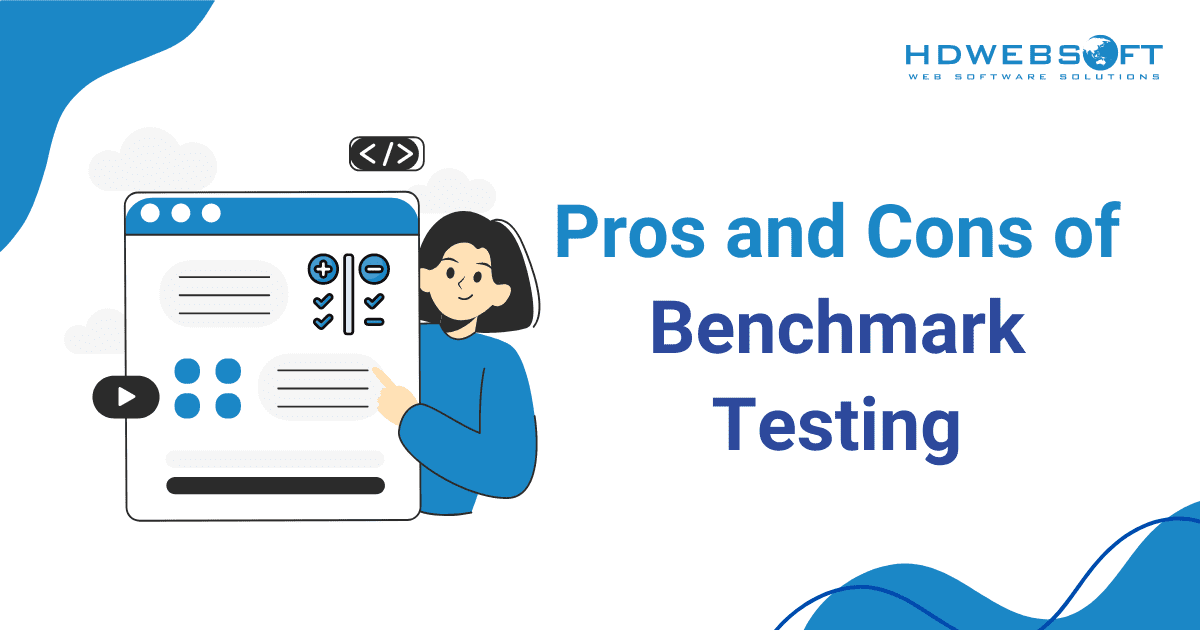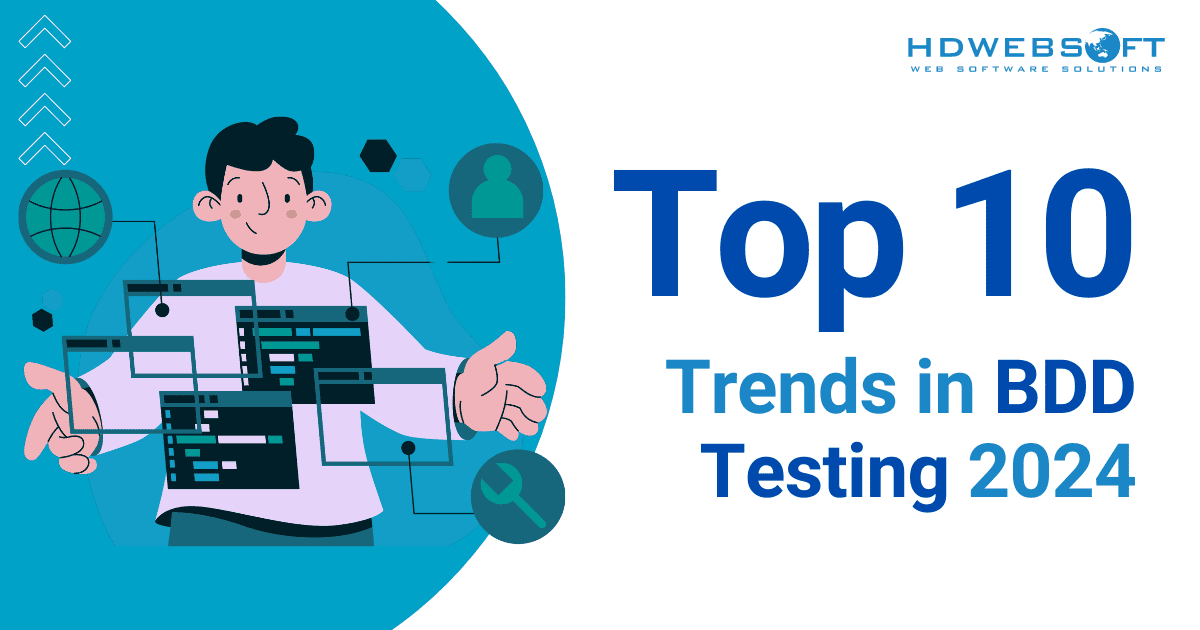
Benchmark Test: Pros and Cons
Benchmarking serves as a crucial process for evaluating the performance and capabilities of various software systems, hardware components, and applications. By simulating real-world usage patterns and comparing results against predefined standards or benchmarks, developers and IT professionals gain valuable insights into the efficiency and reliability of their test software.
However, like any testing methodology, benchmarking has its own set of advantages and disadvantages. Understanding these pros and cons can empower organizations to make informed decisions about integrating benchmark tests into their software development and maintenance processes. This blog will delve deeper into the specifics of both sides of the coin, helping you determine if benchmarking is the right fit for your software development needs.
How Benchmarking Works
Benchmark test must be both repeatable and quantifiable. There are various types of benchmark tests that target different aspects of a system’s performance. Establishing benchmarks allows you to assess the software’s performance consistently with each iteration. Whether measuring performance in numbers or time, the functionality of the application should be quantifiable. Every test conducted during benchmarking should be repeatable and quantifiable to ensure accuracy and reliability.
Repeatable Benchmark Example
For example, if response times significantly vary with each iteration of a load test, it becomes necessary to establish benchmarks for system performance. Consistent and stable response times should be maintained across various load conditions. This means that if you run a load test multiple times, the response times should be similar in each run, indicating that the system performs reliably under the specified load.
Quantifiable Benchmark Example
Let’s say you’re testing a web application. While user experience may not be easily quantifiable in numerical terms, the time a user spends on a webpage, influenced by a well-designed user interface (UI), can be measured. If you observe that users spend more time on a page after UI enhancements, this quantifiable data indicates an improvement in user engagement, thus reflecting better performance and usability.
Pros of Benchmarking
Ensuring your software performs flawlessly for every user is crucial, but how do you know where to begin improvements? Benchmarking sets a baseline for your software’s performance, providing a valuable starting point for optimization. Let’s take a look at how it works to your advantage:
Improved Performance Insight
Benchmark tests go beyond basic functionality checks, offering a deep dive into an application’s performance under simulated load. This detailed analysis helps developers pinpoint bottlenecks and areas for optimization.
A study by researchers at Netflix found that by implementing A/B testing and data-driven performance analysis, they achieved a 10% reduction in content delivery costs while maintaining a high-quality user experience. By identifying inefficiencies and focusing optimization efforts on these areas, benchmarking empowers developers to make targeted improvements that can significantly enhance overall application efficiency and, as the Netflix study suggests, even lead to cost savings.
Enhanced User Experience
Test benchmark goes beyond technical jargon and dives straight into user experience. Studies by Google show a whopping 70% drop in conversion rates on landing pages with just a 1-second mobile load time delay.
Benchmarking helps identify these performance bottlenecks before they frustrate users. By simulating real-world usage patterns and analyzing metrics, it ensures your app delivers a fast and responsive experience. This translates to happy users who keep coming back for more, ultimately boosting engagement and conversion rates.
Competitive Advantage
Benchmark isn’t just about internal optimization; it’s a strategic tool for market positioning. By comparing performance against industry standards and competitor products, especially for e-commerce platforms, companies gain valuable insights. This allows them to identify areas where their systems excel, showcase strengths in marketing materials, and highlight a competitive edge.
Conversely, benchmarking reveals potential weaknesses compared to competitors. This empowers companies to prioritize performance improvements, ensuring their products stay competitive and meet evolving user expectations in the market.
Early Detection of Issues
This type of performance test acts as a proactive shield, identifying potential performance issues before they can disrupt your end users. This early detection is crucial for maintaining a smooth and reliable user experience. By simulating real-world usage patterns and analyzing metrics during the benchmarking process, you can pinpoint bottlenecks and optimize your application.
This emphasis on early testing aligns with findings from Capgemini’s report, which found that 55% of businesses reported improved product and service quality through such practices. Additionally, BDD testing can further enhance this focus by collaboratively defining expected user behavior and catching potential issues early in the development cycle.
Objective Measurement
Performance benchmarking isn’t just about running simulations; it’s about gathering actionable data to optimize your app. It provides a wealth of quantifiable metrics for performance evaluation, allowing teams to move beyond subjective assessments and make data-driven decisions. These objective measurements, like response times and throughput, paint a clear picture of whether an app is meeting its performance goals.
Benchmarking pinpoints areas where the app falls short, it empowers teams to prioritize improvements and ensures their efforts are directed at the most impactful optimizations.
Cons of Benchmark Testing
Benchmark test results provide a valuable snapshot of software performance, but all aspects must be considered to ensure the results accurately reflect real-world scenarios. Here’s a breakdown of key factors to keep in mind when designing and interpreting benchmark tests:
Resource Intensive
While benchmarking offers undeniable advantages, it’s not without its challenges. The process can be resource-intensive, requiring significant investment in time, effort, and potentially specialized tools. This can be a hurdle for smaller teams or organizations with limited budgets.
A study by Tricentis highlights this challenge, reporting that 37% of software development teams struggle to allocate sufficient resources for performance testing. This emphasizes the importance of careful planning and prioritizing testing efforts to maximize the value of benchmark testing within resource constraints.
Complexity in Setup
One of the hurdles in benchmarking lies in creating and maintaining realistic testing environments. Accurately mimicking real-world user behavior and system load is a significant challenge. Factors like user location, device variations, and network fluctuations all contribute to a dynamic user experience. Recreating this complexity in a controlled environment requires meticulous planning and configuration.
Furthermore, maintaining consistency across multiple test runs is crucial for reliable data analysis. Any deviations can introduce errors and invalidate results. This interplay of complexity and meticulousness can lead to extended setup times and the potential for inaccuracies in the final benchmark results.
Dive deep into HDWEBSOFT Data Analysis Projects.
Potential for Misleading Results
While benchmark tests offer valuable insights, focusing solely on achieving high scores can be a double-edged sword. It can lead to over-optimization for specific test scenarios, neglecting real-world usage patterns. Imagine an application excelling in a controlled benchmark environment but failing to deliver when users throw real-world workloads at it. This performance gap highlights the limitations of relying solely on benchmark scores.
Interpreting results in context is crucial. Effective performance optimization involves understanding user behavior and simulating realistic usage patterns during testing. Analyzing benchmark results alongside user data and real-world testing helps identify bottlenecks that might not be apparent in controlled environments. This ensures the application performs well not just in a controlled setting but also in the hands of actual users, leading to a more satisfying and efficient user experience.
Tool Limitations
The allure of having a complete picture can be a double-edged sword when it comes to benchmarking. Individual tools often specialize in specific areas, like load simulation or API testing. This necessitates using a combination of tools to cover all performance aspects of an application.
While this approach ensures a comprehensive assessment, it can significantly complicate the testing process. Managing and integrating multiple tools requires additional effort and expertise, leading to increased resource demands. Optimizing testing efficiency becomes crucial to ensure the benefits of comprehensive testing outweigh the resource burden.
Dependency on Test Conditions
Performance testing is a powerful tool, but its effectiveness hinges on reliable results. A critical factor influencing this reliability is consistency within the test environment. Factors like hardware configurations, network bandwidth, and operating systems can all significantly impact performance metrics.
Unfortunately, ensuring a perfectly uniform test environment can be challenging. Differences in development, staging, and production environments are inevitable. To address this, meticulous planning and configuration management are crucial. By meticulously replicating real-world conditions as closely as possible, performance testing can deliver accurate and actionable insights, ultimately leading to a more optimized and responsive application.
Best Practice for Effective Benchmarking
To achieve the most accurate and actionable results from benchmarking, it’s essential to follow best practices that enhance the effectiveness of the process. Here’s a breakdown of steps to help you implement effective benchmark testing strategies:
Define Clear Objectives
The first step in effective benchmarking is to define your objectives clearly. Understand the specific performance areas you want to evaluate. Whether you’re looking to improve system speed, stability, or scalability, establishing your goals helps to tailor the benchmarking process.
For example, if your objective is to assess server performance under high traffic, your focus should be on load testing and stress testing. Clear objectives ensure that you measure the right metrics and work towards relevant outcomes.
Choose the Right Benchmarking Tools
Selecting the right tools is key to effective benchmarking. Various benchmarking tools are available that cater to different software performance needs, whether for testing CPU, memory, disk performance, or network speed. Popular tools like PassMark, Geekbench, and Apache JMeter offer specific features tailored to different benchmarking requirements.
It’s important to choose tools that align with your objectives and can handle the scale of your operations.
Use Realistic Workloads
When conducting benchmarking, it’s essential to simulate real-world scenarios. Therefore, the performance results you get from synthetic or unrealistic workloads may not reflect the system’s actual behavior in production. To ensure the insights gained are relevant, use data and traffic patterns that resemble your typical operations.
This practice gives a more accurate understanding of how the system will perform under expected conditions and consequently helps prevent over-optimization for non-representative workloads.
Test in a Controlled Environment
Testing should be conducted in a controlled environment to ensure accurate benchmarking results. Isolating the system or component from external factors, such as network variations or hardware interference, helps you maintain consistency.
Ideally, you should perform the tests multiple times under similar conditions to capture consistent trends. When testing on different systems or environments, be sure to note the variations and account for them in your analysis to prevent skewed data.
Monitor Key Metrics
Benchmarking involves tracking key performance indicators (KPIs) relevant to your system. Depending on your objective, KPIs may include processing speed, response time, memory usage, or disk read/write rates.
By focusing on these key metrics, you can gain insights into how well your system performs. Benchmark tools usually provide a variety of metrics, so it’s crucial to filter out those that don’t contribute to your goal and concentrate on the ones that do.

Monitoring benchmarking is the best way to gain insight from the tests.
Interpret Data Accurately
After running your benchmarks, correctly interpreting the data becomes just as important as the process itself. To begin with, data analysis should involve a comprehensive look at the numbers, identifying trends, and highlighting any possible anomalies. Furthermore, comparing your results to industry standards or previous performance metrics provides essential context for understanding where improvements are needed.
In addition, such comparisons offer a clearer view of how your system stands relative to competitors, which ultimately informs decision-making for optimization efforts.
Remember that one-off spikes in performance or drops may indicate irregularities, so it’s best to look for consistent patterns before drawing conclusions.
Act on Insights
Benchmarking is not just about collecting data—it’s about using that data to make informed decisions. Once you’ve analyzed the benchmarking results, the next step is to implement changes based on your findings. Whether it’s upgrading hardware, optimizing code, or reconfiguring system settings, acting on the insights gained from benchmarking will drive continuous improvement.
It’s essential to revisit benchmarking regularly, especially after system updates or modifications, to ensure the changes made are effective.
Document the Process
Lastly, documenting your benchmark test process is a best practice that helps maintain consistency. Having a record of the tools used, metrics measured, and the results obtained allows for easier comparisons in future tests. This documentation serves as a reference point for your team and helps ensure that all stakeholders understand the process and results.

Documenting the benchmarking process is a must. Who knows if you need it for future reference?
Conclusion
Benchmarking is a valuable tool for evaluating the performance and capabilities of software systems and applications. While it offers numerous benefits, such as improved performance insight and enhanced user experience, it also comes with challenges, including resource intensity and complexity in setup. By understanding the pros and cons, organizations can strategically implement benchmarking to achieve optimal results and maintain high-performance standards in their software and systems.












